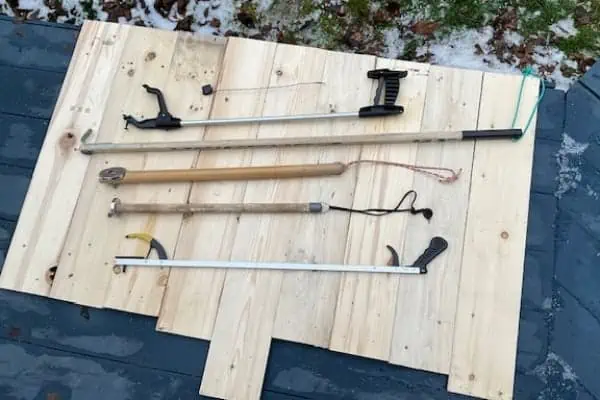Ling cod, burbot, fresh-water cod—call them what you like, we can all agree that they’re delicious.
I’ve yet to hear of a complicated recipe, but there are probably some available.
As mentioned in my Step Outside column in this issue, dressing-out a ling cod is different from handling any other Yukon species.
When you have done this procedure, you have four pieces of firm, white meat. The two “loins” are along the top of the fish on either side of the centre. In a larger fish (seven to eight lbs), these may be one-and-a-half inches in diameter and eight to 12 inches long. These are the choice pieces.
The rear part of the fish is skinny compared to the front. The tail slabs on either side are easily filleted off while the fish is still hanging by a nail from a tree.
I package the “loins” separately from the tail slabs, using a vacuum sealer and the appropriate size vacuum bags.
I mark the species and the date caught with felt marker on the bags. This way I can always use the longest-frozen fish first to maintain freshness.
Some people also remove the “bellies”, but to my taste they are not an edible portion of the fish. In with any fish, game or birds, keep the packages meal-size. Making them larger than what you can use for a meal just leads to wastage.
Dressing a ling cod is easy if you nail it to a tree or post PHOTOS: Larry Leigh
The packages should be kept on ice until you can get them into a freezer. Remember, plastic bags are brittle and easily damaged when frozen. This allows air into the package and leads to freezer burn, making them inedible.
You can avoid this by over-wrapping with freezer paper or, at the very least, boxing the fish packages separately to avoid contact with other frozen foods.
A note regarding vacuum sealers: these wonderful devices help maintain the flavour of anything you put in your freezer.
Until now they have always been fairly expensive, ran on electricity and very dependable. Now a unit known as “Zip-Vac” is on the market and available locally at The Sportslodge. The hand-pump unit (small and completely portable) is about $10 plus the cost of bags.
Now for the best part: cooking and eating.
The simplest way to cook ling cod is “Poorman’s Lobster.” You will be pleasantly surprised at how delicious this for something so simple to prepare.
This is a perfect campfire meal, but this no-muss, no-fuss dish is equally at home on the kitchen stove.
Heat two to three inches of water to a moderate boil in a pot or fry pan. Add enough salt to make it fairly salty to the taste.
Chunk the fish into finger-food size pieces and simply dump the chunks into the water, maintaining a rolling boil. It only takes two to three minutes for the fish to tell you it’s done by floating to the surface.
Scoop or dump it into a strainer to drain.
Then with clean fingers, forks or toothpicks dip the still-hot fish in melted butter, with or without garlic added. The “lobster” part of the title refers to the slightly chewy consistency, similar to lobster, this fish takes on when cooked this way.
For other cooking methods, the tail slabs are laid flat on a cutting board and cut into serving sized pieces. The loins are sliced into 3/8″ pieces from top to bottom like a cucumber. For larger sized pieces, simply cut from top to bottom on an angle.
The loins and tail slabs can also be breaded or coated with a commercially prepared product and deep-fried or just pan-fried in vegetable oil. Lard is actually best, as it can heated to a higher temperature for the cooking.
These pieces can also be rolled in flour, dipped in egg and milk mixture, then rolled in standard or Italian bread crumbs and cooked the same way.
A dish that will get them all talking is a pretty simple appetizer. Cut the fish pieces smaller than for a meal serving (experience will teach you how large). Tail slab pieces can be rolled to make them thicker, if desired.
Take ordinary bacon, cut the slices in half and partially cook them. Drain the bacon and wrap each half slice around a piece of raw fish, securing each fish/bacon bundle with a toothpick.
Now the secret: marinate these little wraps in Zesty Italian salad dressing. If you use a container with a tight lid, you can gently invert the container occasionally to thoroughly marinate the appetizers.
The time in the marinade can be as little as an hour, but three to four hours is better.
These little treats are then put on your pretty hot barbecue, or on a rack over hot coals. They need to be turned a few times and can be fragile, so a barbecue cooking basket works well.
They need only five to eight minutes of cooking, depending on temperature.
When you serve them, tell your guests it’s a special scallop appetizer. They’ll believe you, but tell the truth eventually. Ling cod deserve a good reputation.




